When two amazing purebred dogs met back in the 1990s, the world never knew it would create the finest pup of them all – the Goldendoodle.
In the world of many Doodles, the standard Goldendoodle wins all first prizes.
He’s a pup with a big heart, a big brain, and a body bigger than the rest of the Goldendoodles. And, he’s our dog of the day.
Whether you use them as watchdogs, service dogs, or have any other useful jobs for them, the fact is the standard Goldendoodle fits everywhere.
The only question here is whether you’ll fit with them?
History Of The Breed: How We Got Our Goldendoodle!
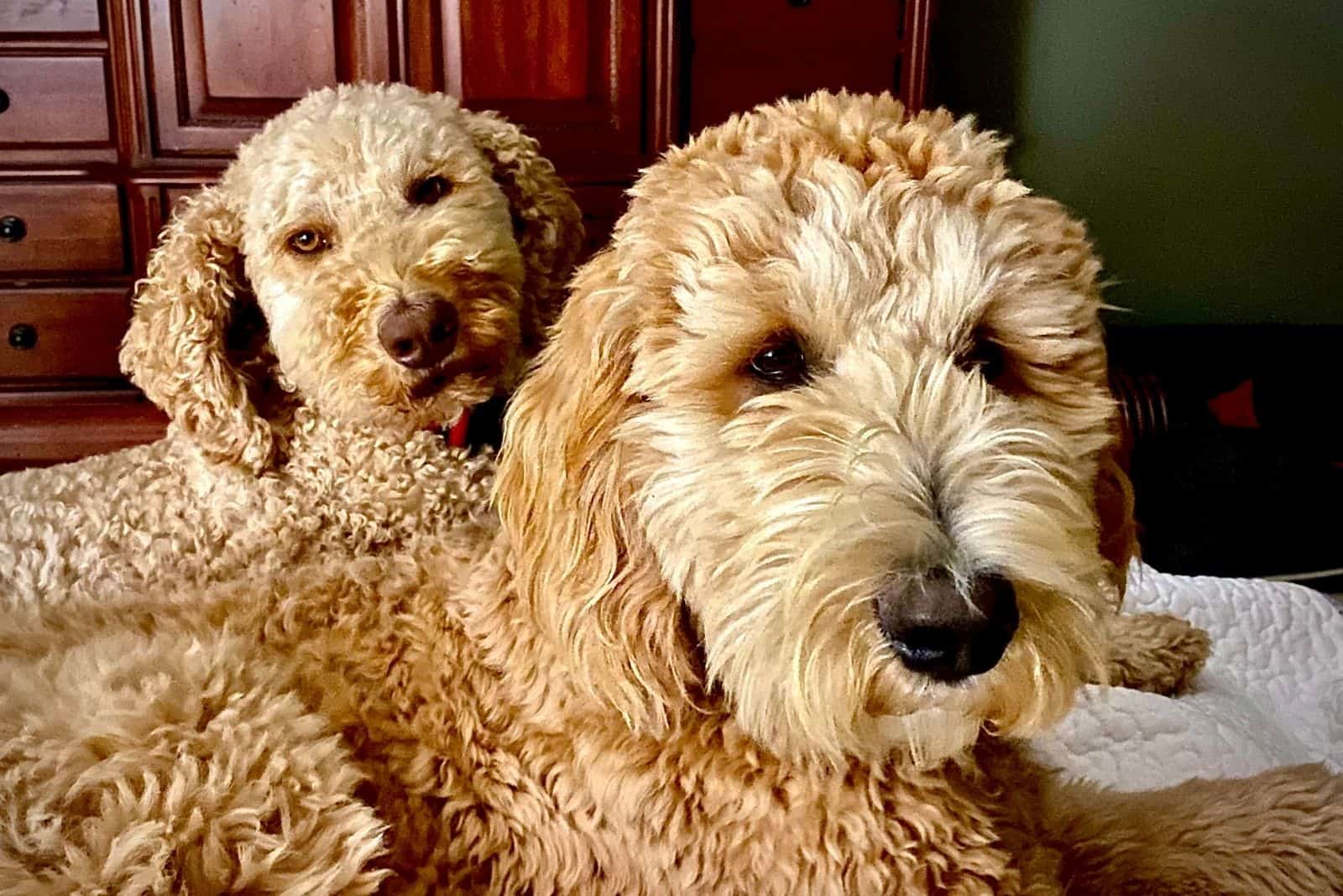
The Goldendoodle is a fairly young Doodle.
Breeding of this pup began back in the 1990s when the world got to know a few other amazing mixed breeds, such as the Cockapoo, the Bernedoodle, and the Labradoodle.
The whole point of developing a Goldendoodle was to create a dog significantly larger than his cousins, but still as intelligent and friendly as the parent breed, the Golden Retriever.
A bonus task that was done successfully was to keep the low-dander and low-shedding coat.
Since Goldendoodles are relatively young dogs, most pups are still the result of first-generation breeding, meaning they’re a mix of Golden Retrievers and Poodles.
It’s not that common for two Goldendoodles to breed.
Goldendoodles have become quite popular family dogs, especially in Australia, yet still, there’s no breed club or registration for this crossbreed.
We do, however, have several online communities that gather Goldendoodle lovers from all across the world.
It’s highly likely that the Goldendoodle’s popularity will knock off every other Doodle from first place.
How Big Do Goldendoodles Get?
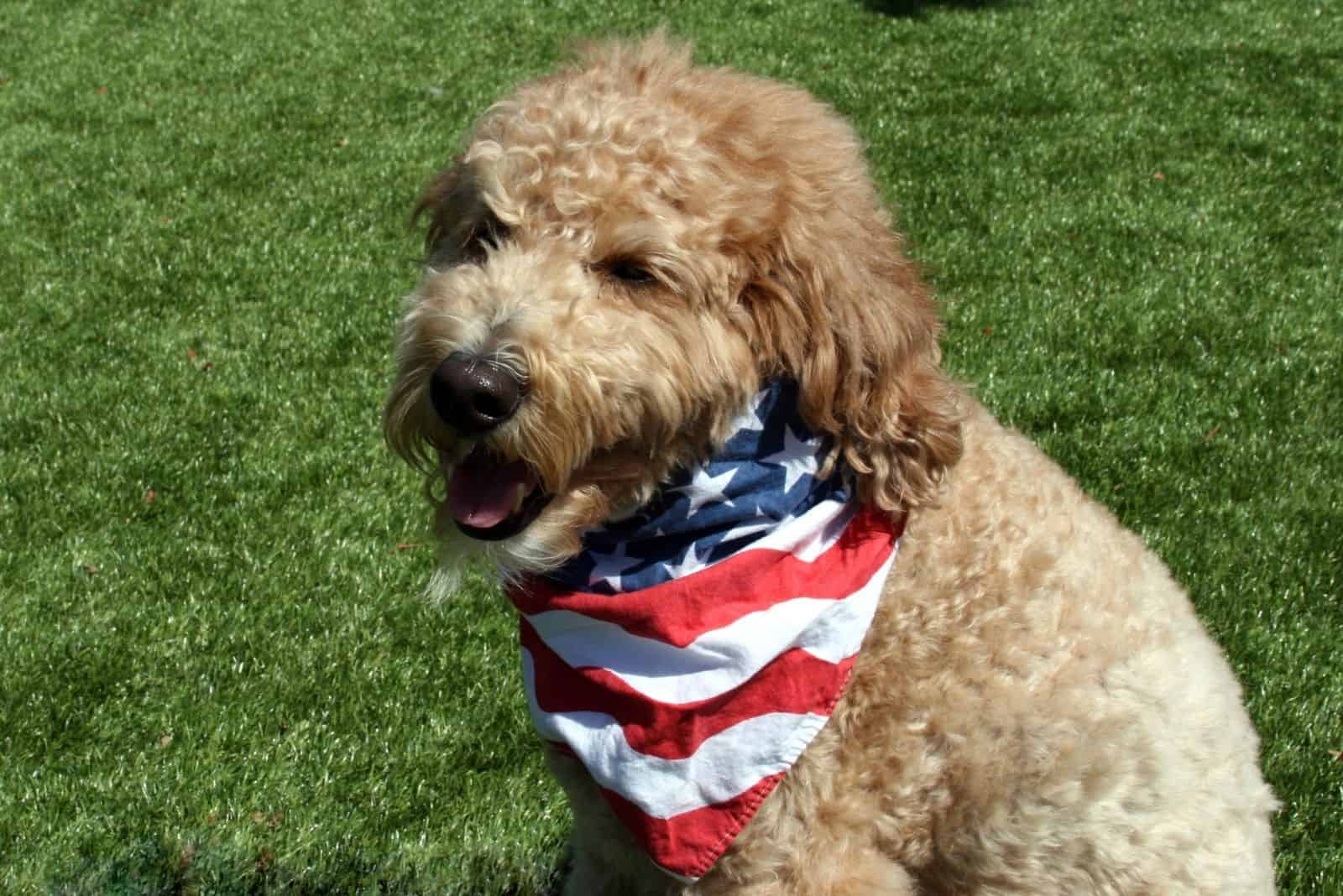
Goldendoodles are rarely a product of multigene breeding, meaning two Goldendoodles are mixed together.
These pups vary in size, and there are no breed standards when it comes to sizing.
Still, there are three Goldendoodle sizes:
• miniature Goldendoodles
• small standard or medium Goldendoodles
• large standard Goldendoodle
The Mini Goldendoodle is the result of breeding a purebred Miniature Poodle or Toy Poodle with a standard Golden Retriever.
They can grow between 13 and 20 inches and weigh around 15 to 35 pounds. They should not be mistaken with teacup Goldendoodles, micro, or petite ones either.
The Small Standard Goldendoodle grows up to 20 inches in height and weighs 40 to 50 pounds.
The Large Standard Goldendoodle averages 20 to 24 inches in height, and can grow up to an astonishing 90 pounds! This is the biggest of all Goldendoodles.
Generally, we can tell a Goldendoodle is standard if it weighs over 40 pounds. The average numbers are 22 inches tall, and between 50 and 60 pounds.
Since this is the biggest Doodle, you’ll need lots of space for this fella!
Standard Goldendoodles are the perfect-sized dogs that fit great with people who love exercising with their dogs.
A big, spacious house and a nice, fenced yard would be the ideal home for the standard Goldendoodle to spend its lifespan.
Personality: How Sweet Are Goldendoodles?
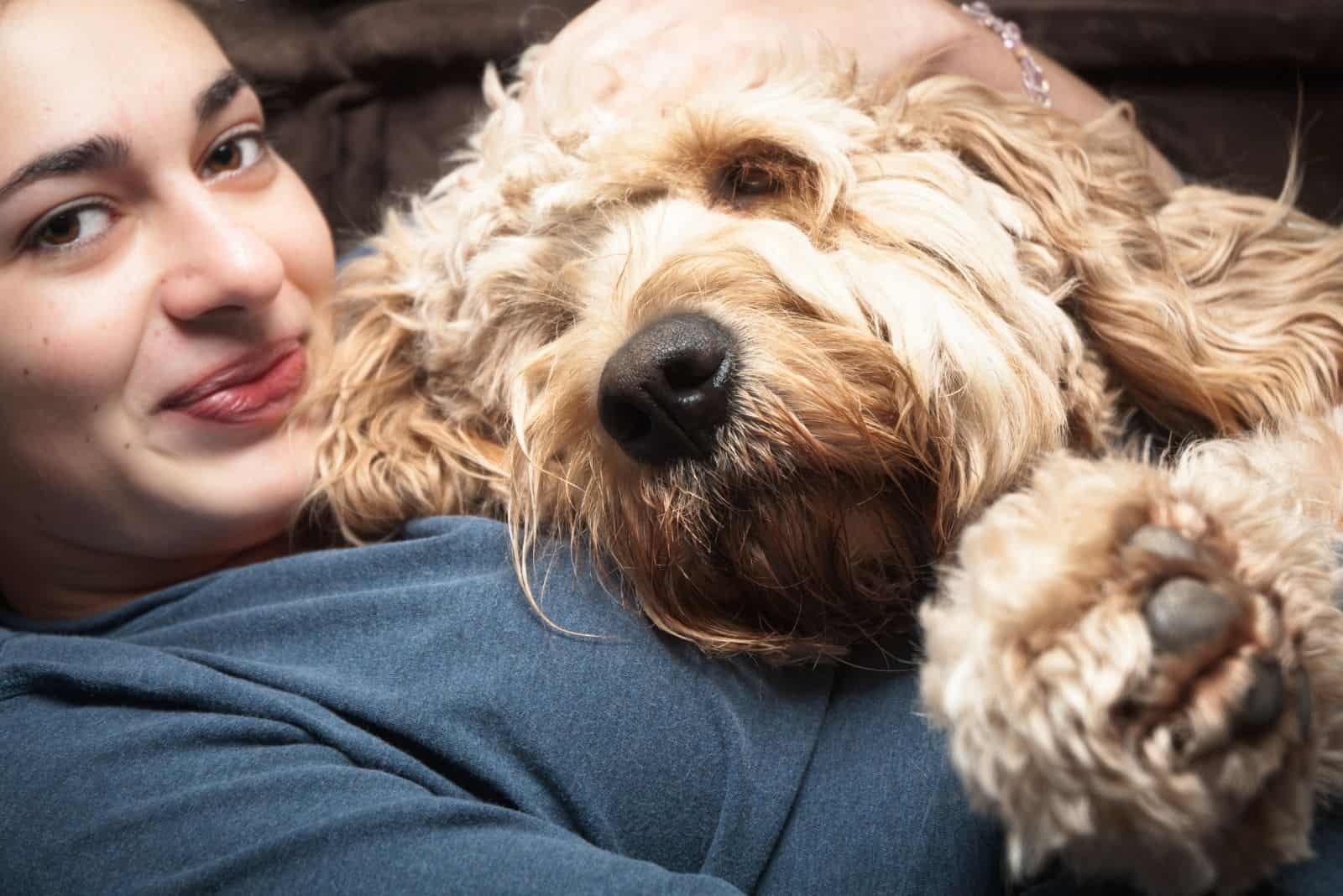
There’s a good reason why the Goldendoodles enjoy such popularity. The positive traits, kind nature, and friendliness to everyone is what makes this intelligent pooch so loved.
This gentle spirit makes a wonderful addition to every family, especially those who are more on the active side. These pups aren’t lazy couch potatoes.
They’re a loyal mixed breed that can become very obedient if trained properly.
No one can’t tell that Goldendoodles aren’t playful. They tend to be a bit naughty and mischievous if the mood strikes.
Puppies with a sweet temper approach new people freely and allow themselves to be held.
When picking out your Goldendoodle, make sure you pick the middle puppy; one that is not too shy and not too vicious.
It’s best to meet at least one parent if possible to get a general idea of what kind of temperament your puppy might inherit and what they will be like when they get older.
Every dog breed needs early socialization as the ground step of any training.
What’s important for your pup’s future temperament is to expose the dog to many different stimulants, like people, other pets, sounds, sights, situations…
Only a socialized pooch can grow into a perfect individual.
Here’s where a puppy kindergarten class proves its efficiency.
This way, the puppy will spend plenty of time with other dogs and learn how to behave by looking at other behavioral patterns.
The kindergarten will help your dog polish its social skills.
Will My Goldendoodle Live A Healthy Life?
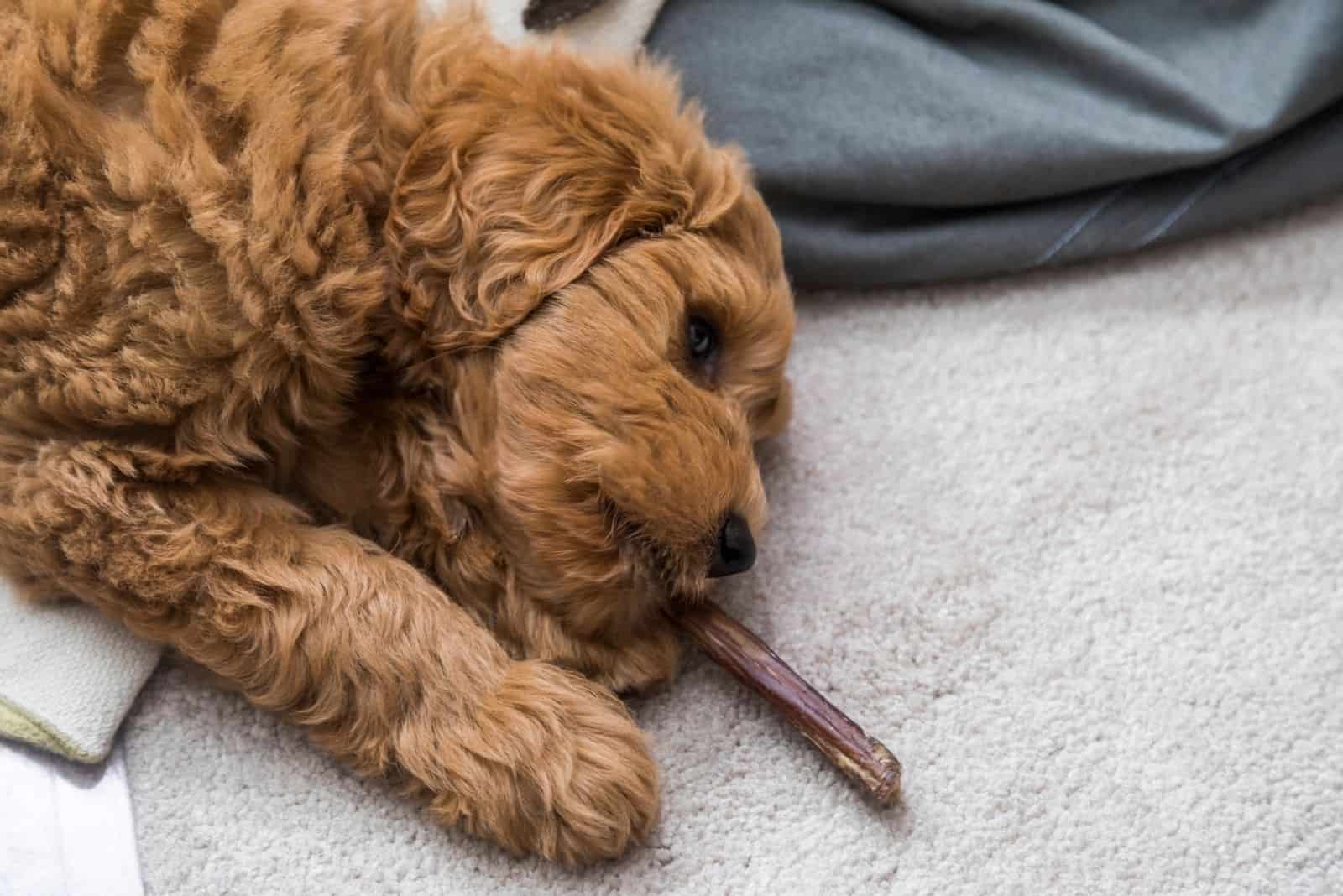
The good news is that Goldendoodles are a generally healthy crossbreed. Still, like many other dogs, they can be prone to some health issues.
This doesn’t mean your pup will suffer from everything on our list… we’re just making sure you know which diseases can affect your Doodle.
When buying a Doodle puppy, make sure it’s from a reputable breeder, and don’t forget to ask the breeder if he could provide you health clearances for both of the dog parents.
In other words, ask for tests on different conditions. If they come back good, then you’re good to buy, too!
You can expect the following health conditions in Goldendoodles:
• Patellar Luxation
Also known as slipped stifles, this is a usual problem in small dogs. The condition presents a dislocation of an anatomical part of the kneecap.
Patellar luxation happens when the knee joint slides out of its place. It causes pain, crippling, and usually affects hind legs.
• Ear Infections
Ear infections are pretty common all because of the shape of the ear that Goldendoodles have.
Their ears are floppy, meaning they’re the perfect place, dark and moist, to develop bacteria. Never forget to check and clean the ears when grooming your pooch!
• Hip Dysplasia
Hip dysplasia is an inherited condition where the trigger bone doesn’t fit into the hip joint so snugly.
Dogs will show signs of pain and lameness in case of this scenario. Usually, it’s the hind legs that are affected the most.
In other words, arthritis can happen as the dog ages.
That’s why dogs with hip dysplasia shouldn’t be bred. Check with your dog breeder whether one of the parents has hip dysplasia.
• Elbow Dysplasia
Elbow dysplasia is a condition similar to hip dysplasia. This is also a degenerative disease that causes abnormal growth and development.
A dog suffering from elbow dysplasia can develop arthritis or become lame.
Treatment includes surgery, weight management, medical management, and anti-inflammatory meds.
Progressive Retinal Atrophy (PRA)
This is a family of eye diseases that involves the gradual deterioration of the retina.
First, the dog becomes night-blind, then they become limited during the day or completely lose their vision.
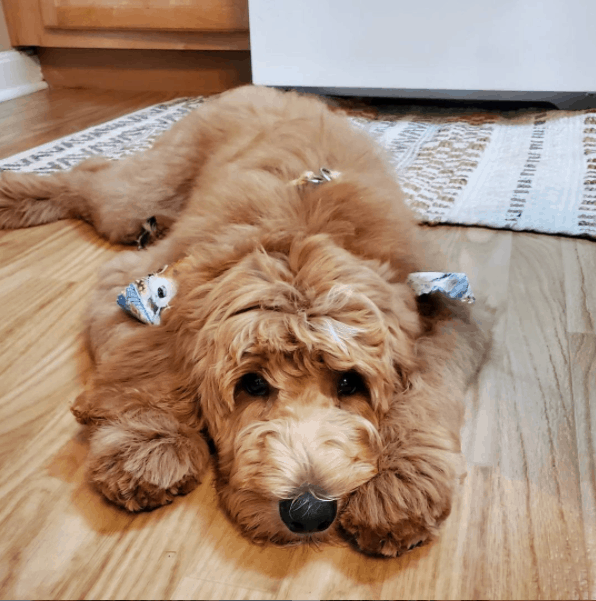
Photo from: @charris1220
Many dogs can lead a normal life after losing sight as long as their surroundings don’t change.
• Von Willebrand’s Disease
This condition is found in both dogs and humans. It’s a blood disorder that affects the clotting process.
The symptoms include nosebleeds, bleeding gums, prolonged bleeding after surgery, during heath cycles, and after whelping.
This disorder is usually diagnosed when the dog is between three to five years old.
Unfortunately, it’s incurable, but it’s still manageable with treatments like cauterization or suturing injuries, transfusions before surgery, etc.
• Allergies
Allergies are the most common health condition in all dogs, and Goldendoodles are no exception. There are three main types of allergies.
The first one is food allergies, which can be treated by eliminating some foods from the dog’s diet.
Next, we have contact allergies that cause reactions to a topical substance like flea powder, shampoo, or other chemicals.
Lastly, inhalant allergies are those being caused by airborne allergens, such as pollen, dust, or mildew.
Treatment varies and may include medications, dietary restrictions, and environmental changes.
• Gastric Dilatation-Volvulus
Also known as bloat, this condition is severe and can be fatal if not recognized in time. It affects deep-chested pups like the standard Goldendoodle.
The main reason behind getting bloat is irresponsible feeding. Goldendoodles should never eat one giant meal in a day, eat fast, drink plenty of water afterward, or go exercising right after a meal.
For more information on nutrition of Goldendoodles, check the Goldendoodle feeding chart.
Older dogs are usually diagnosed with bloat.
Here’s what happens inside a dog with bloat: the stomach gets distended with gas or air and then the air twists the stomach.
The dog can’t belch or vomit to get rid of the excess air, and the normal return of blood to the heart is limited.
When the blood pressure drops, the dog will go into shock and die if not given any help from a vet.
Don’t let this discourage you from getting a Goldendoodle. Bloat can be cured if you catch the symptoms early.
Be on the lookout for a distended abdomen, excessive salivating, retching without vomiting, restlessness, depression, weakness, or lethargic behavior with a fast heart rate.
• Hypothyroidism
This is a disorder of the thyroid gland. It’s believed this condition is the reason why epilepsy, alopecia, obesity, lethargy, pyoderma, hyperpigmentation, and all the others develop.
Meds and a change of diet are required.
To sum up, the overall health status of Goldendoodles is good.
Taking Care Of Your Goldendoodle Puppy: Giving Them The Best Possible Care
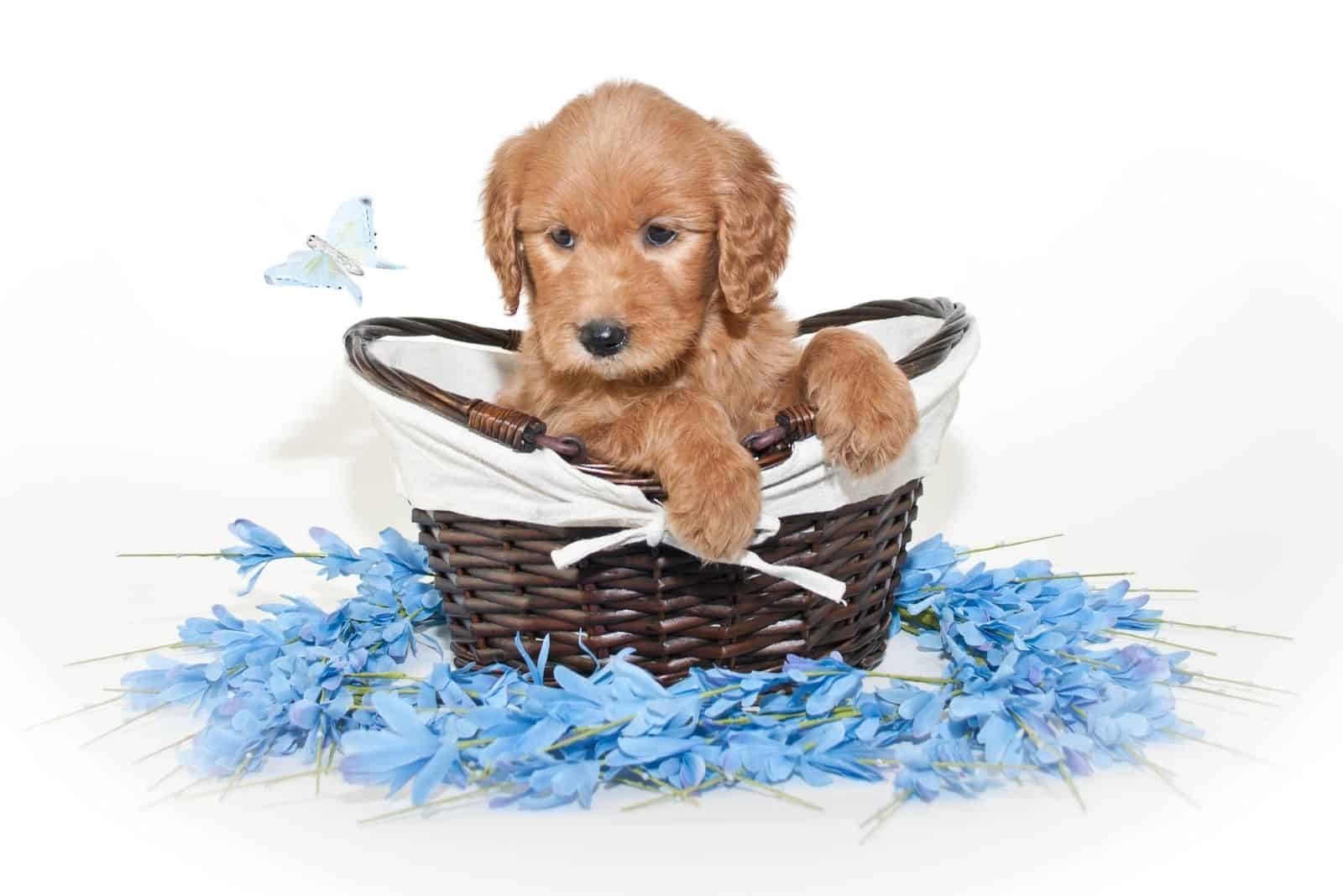
The Goldendoodles are blessed by being one of the easiest dogs to train.
They’ve inherited the intelligent trait from the Poodle parent, and the gentle nature from the Retriever side.
These pups are usually so eager to please that you’d find training them to be a delight!
Whether you’re an experienced trainer or a first-time Doodle owner, you’ll see there are almost no problems when training them, including potty training too!
With plenty of positive reinforcement, you can have a well-behaved, confident dog who does exactly what you ask him to do.
Once again, we have to stress the importance of early socialization. If not handled with proper care, Goldendoodles might become too shy or timid to do anything because there’s a new dog on the block, or someone walked up to you.
The Goldendoodle has an average to high energy level, and will require daily exercise.
Walkies, going over ramps, swimming, exercise courses, and playing frisbee are just some of the things you can do together to bond and help your dog stay fit.
Doing this for around thirty minutes a day will be enough.
Since Standard Goldendoodles are large dogs, they need a big space to live in. Small city apartments might not be such a good idea. A nice home with a yard is their idea of Heaven.
However, that doesn’t mean your Goldendoodle should stay in the Kennel.
This is a dog that can suffer from separation anxiety, so you better make sure he’s in the house being equal and a good family pet; otherwise, you’ll face his destructive behavior.
Feeding: How Much Does A Goldendoodle Love To Eat?
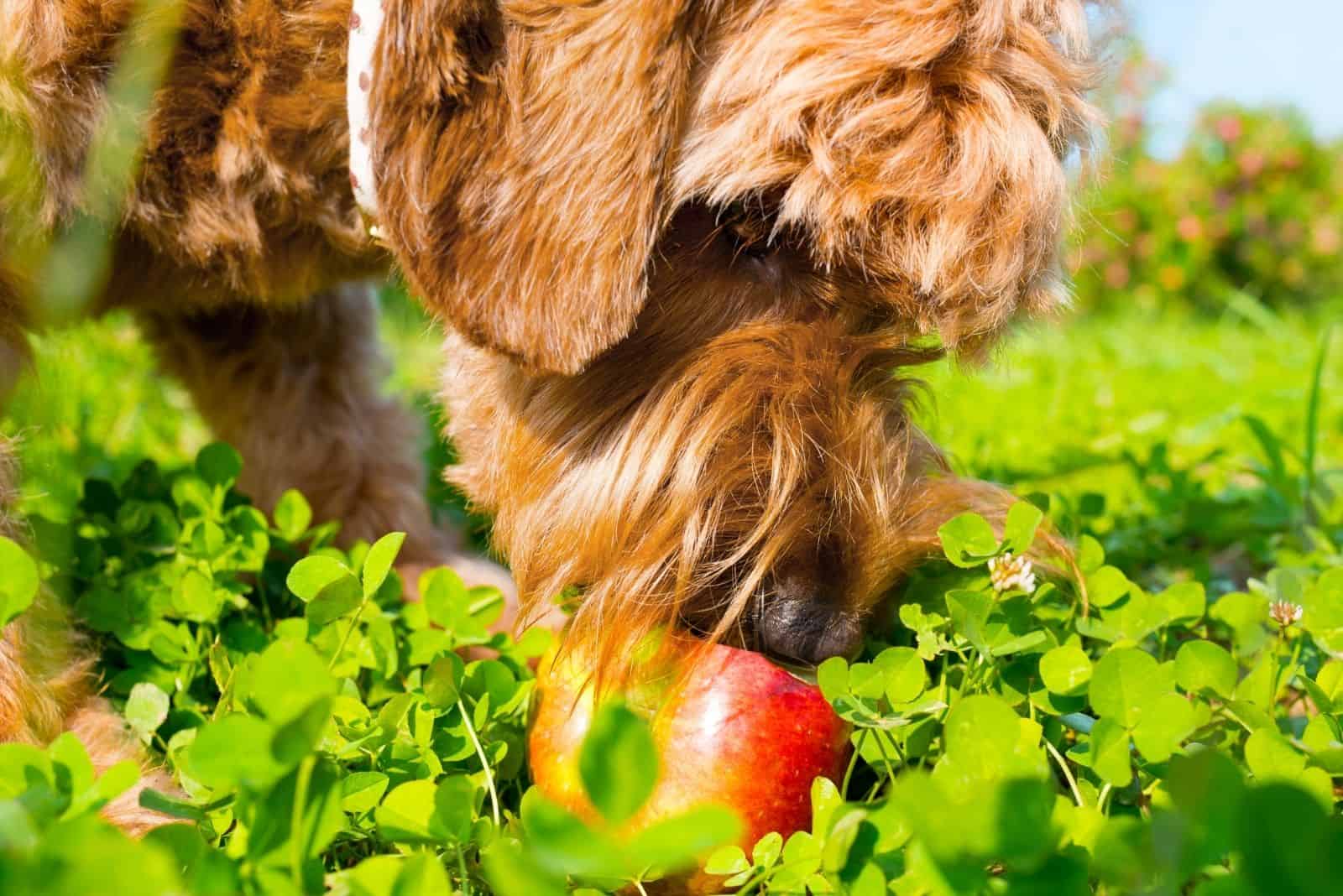
All dogs are fond of food, especially treats. But, that doesn’t mean they should eat whatever they want and whenever they want.
The recommended daily amount for Goldendoodles is one to four cups of dry kibble a day, divided into smaller meals.
How much your adult dog eats depends on several reasons, including size, age, metabolism, and activity level. Highly active dogs need more food than those who spend the day lying down.
But, that doesn’t mean you should shove Vienna sausages down their throats or any other unhealthy snacks like Cheez-its or Doritos! Keep the diet clean and healthy.
Another thing that matters is the quality of dog food. The better the food, the better your dog will feel. Also, you won’t need to put much food in the bowl since it makes the dog feel full pretty fast.
The golden standard would be feeding your Goldendoodle twice a day. This way, you’ll avoid the dog becoming overweight or suffering from bloat.
Dog owners, especially first-time Goldendoodle owners, should know how to check whether their dog is in good shape or not.
The eye and hands-on test help a lot here. You should be able to see the waist, then put your hands on his back with your thumbs along the spine and your fingers spread downward.
You should be able to feel the ribs, but not see them.
If you can’t feel the ribs, it’s time for your Goldendoodle pup to go on a diet.
Coat Color And Grooming: What Does A Standard Goldendoodle Look like?
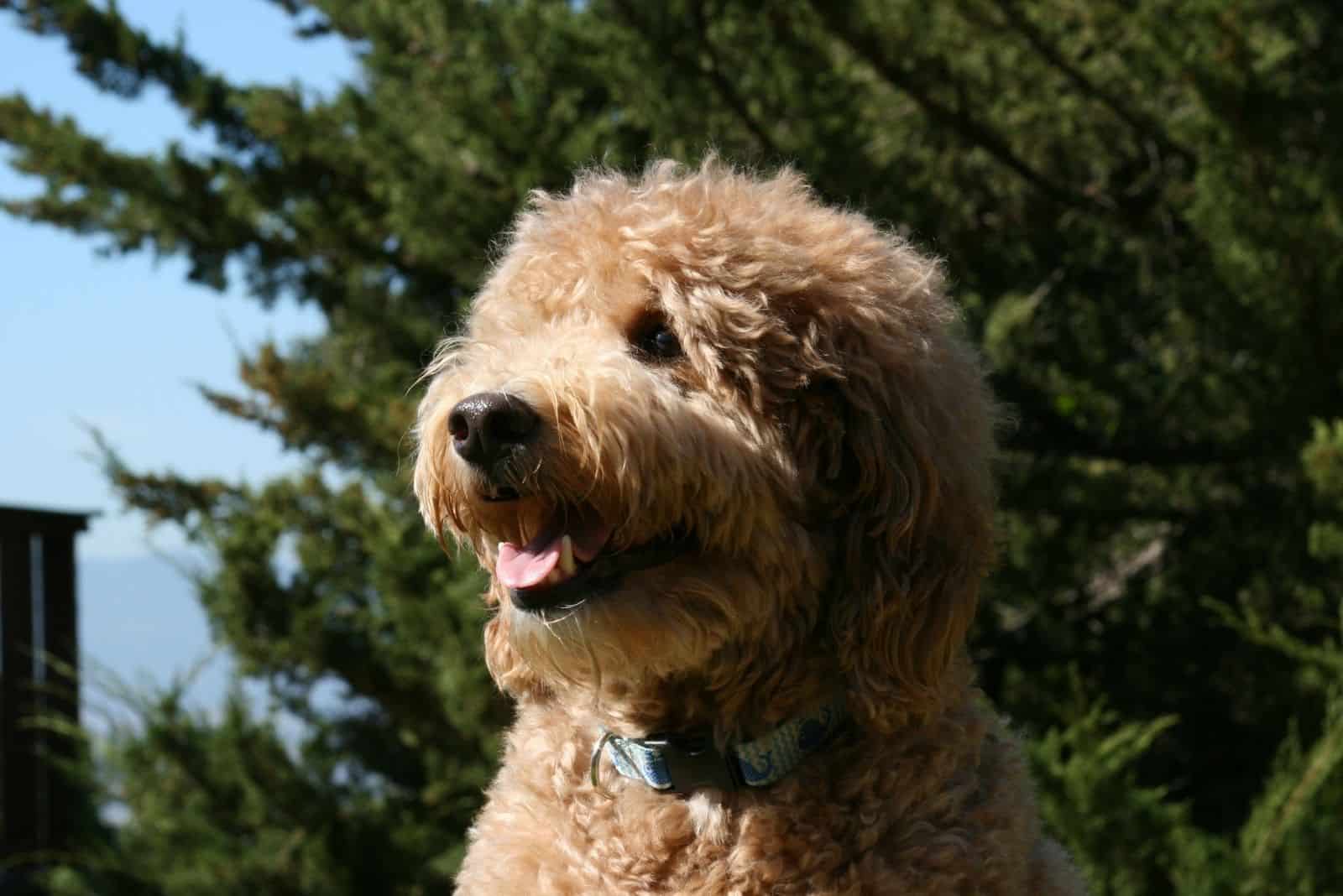
The Standard Goldendoodle should have a coat type that is wavy to curly.
The length varies between two to three inches. As a rule, the Goldendoodle has longer hair on the tail, ears, body, and legs. Shorter hair is on the head and muzzle.
The coat color can be from this list:
• black
• white
• copper
• cream
• grey
• golden
• apricot
• red
Thanks to the Poodle parent, Goldendoodles seem to be hypoallergenic dogs that shed only a little, but still, these dogs need regular grooming to keep their coat in perfect shape.
The coat is usually clipped by the owners to ensure easy maintenance.
If you decide not to clip the hair, you’ll need to commit to brushing the coat every week or two.
The Standard Goldendoodle doesn’t need much bath time. If you tend to bathe your pup a lot, it will cause the dog to lose its natural oils and become prone to skin irritations.
Brushing your Goldendoodle’s teeth is another important task. Brush them at least two or three times a week to avoid tartar buildup and bacteria development.
If you have extra time, daily brushing would be amazing!
Nail trimming should occur twice a month unless the dog doesn’t wear the nails down himself.
If you hear the nails clicking on the floor, it’s time to get the nail clipper. Otherwise, your dog will be in serious trouble.
But, be careful when cutting the nails yourself. Dog toenails have blood vessels inside them, and if you cut too far, they might bleed.
What’s even worse, you’ll never get the chance to clip them again because your dog will get scared for life.
Having a groomer do the clipping for you is probably the safest option.
The ears are floppy, dark, and moist, which makes them the ideal ground for developing irritations and bacterial infections. If you see any redness or smell a bad odor, it’s time to see the vet.
Generally, a cotton ball damped with a gentle ear cleaner will help prevent such conditions.
If you start grooming early in puppyhood, then chances are you’ll have a grown Goldendoodle who loves being groomed.
In the end…
The Standard Goldendoodle is the same as any other Goldendoodle. It’s the size that distinguishes them from the others.
They have the adorable trait all Doodles have, but a bigger size, which is ideal for active families.
We see no reason why this loveable pup can’t become a part of your family. The finest Doodle of Doodles is waiting for you to pick one, name it and take it to its forever home.

















